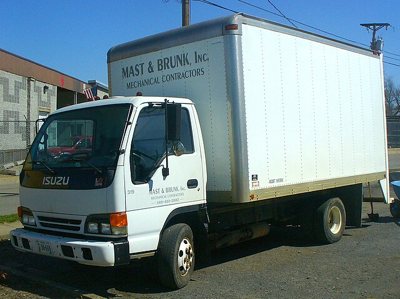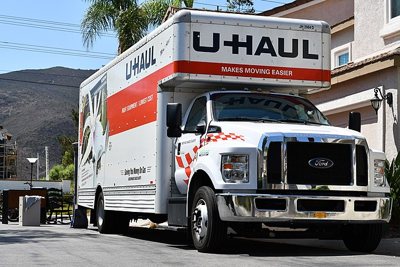Traveling with a large, heavy load is a challenge - from getting the right type of vehicle to lifting the heavy item. Hauling heavy loads often requires additional manpower, which can be costly. This is why proper planning is essential before any heavy hauling takes place. A single issue on the road could lead to days of delay and even legal problems
Driving Oversized Vehicles
 Hauling heavy items could mean you'll have to drive oversized vehicles and unfortunately, you can't just get a large, oversized truck and drive it around without additional permits and licenses.
Hauling heavy items could mean you'll have to drive oversized vehicles and unfortunately, you can't just get a large, oversized truck and drive it around without additional permits and licenses.
To be clear, an oversized vehicle is one that has exceeded standard vehicle specifications. Although local regulations vary on the definition of an oversized vehicle, the following are the general limits:
- Width: 8.5 feet or 102 inches
- Height: 13.5 feet or 162 inches
- Length: 53 feet or 636 inches
- Weight: 80,000 pounds
If any of these general limitations is exceeded, the vehicle would be considered an oversized vehicle and a special permit required.
Permit Requirements
Permit requirements for oversized vehicles actually vary based on the location and type of vehicle. Generally, you'll need to obtain permits from the relevant authorities before hauling an oversized vehicle. This may include:
- Special permits for oversized vehicles
- Commercial driver's licenses (CDLs)
- Other documentation, such as insurance and registration
Commercial Driver's License
As much as possible, you have to make sure your hauling vehicle complies with standard driver's license requirements. Exceeding these limits may require a Commercial Driver's License (CDL), which can be challenging to obtain and it's not worth it if you're just hauling your own stuff interstate.
In the US, a Commercial Driver's License (CDL) is required for drivers who operate large vehicles in interstate commerce, including those that carry heavy loads or hazardous materials. A separate special CDL is needed to transport hazardous materials. To obtain one, you'll have to go through a separate training, pass the written and practical exam, and undergo background and physical exam, and additional requirements that may differ in each state.
From tests, training and obtaining documents, you could easily end up spending at least $3,000 for a CDL - a noteworthy investment only if you're planning to do commercial truck driving full time.
 Renting
Renting
It's easy to get anxious about local regulations on overweight and oversized vehicles. But one of the best ways to avoid having this problem is to simply rent a truck or van from one of the many hauling companies in the area. Their trucks and vans for hire are made to comply with the general restrictions on height and width to avoid getting into legal trouble while on the road. Renting these types of vehicles is also an advantage because they are generally considered personal vehicles for personal hauling purposes so they are rarely flagged down because of their size and weight.
Conclusion
Understanding the requirements and challenges associated with hauling oversized vehicles helps you ensure a smooth and successful haul. Whether you're hauling a large load for a construction project or a special event, it's smart to plan carefully and comply with all relevant regulations.
